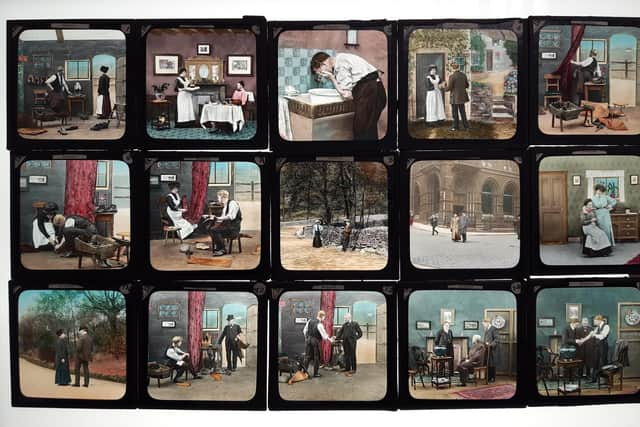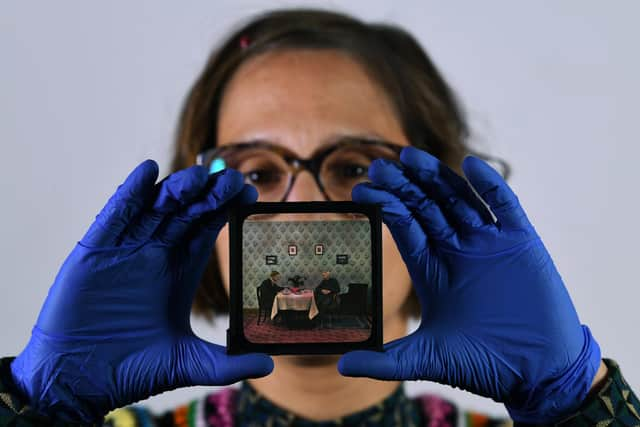Fascinating treasure trove of photographs reveals scenes of Victorian life in Yorkshire
Bradford’s National Science and Media Museum has acquired an incredible collection of late 19th and early 20th century slides, some 2,600 strong.
And it’s the images within them that are most special of all. From each, a rich visual history of the city’s heritage unfolds.
Advertisement
Hide AdAdvertisement
Hide AdThere’s the former banking hall on Hustlergate, which is easy to identify. Cobbled streets, terraced cityscapes, which could be anywhere at all.


Some of the settings will remain in place today, say conservators, and they are keen to hear from anyone that might recognise these landscapes.
“It’s fascinating to see how much has changed,” said the museum’s conservator Vanessa Torres. “Or how little. It could be anywhere in Yorkshire.
“We see the cobbled stones, and the sandstone buildings, a huge amount of terraced homes. It’s difficult to tell where it is, but there is a sense of familiarity.
Advertisement
Hide AdAdvertisement
Hide Ad“It will be really interesting to hear people recognise the landscapes. Or even the people in the pictures.


“They are stories of Bradford, but stories that can be told anywhere,” she added.
“Sometimes we take 21st century technology for granted. We forget how much tech has advanced. They were called ‘magic’ lanterns because it was magic to see.”
Developed in the 17th century, magic lanterns are early projectors that use a bulb or candle flame to project images, prints or photographs on a glass slide.
Advertisement
Hide AdAdvertisement
Hide AdThey were commonly used until the mid-20th century as a form of entertainment, and the Riley Brothers set up their own magic lantern business in the city’s Godwin Street.
These slides were once part of the brothers’ lending library, and there are 182 stories with more than 2,600 slides.
As conservator, Ms Torres has been documenting their arrival. Each set must be charted, with its own unique number. Then photographed, using a lightbox, to note any damage.
Finally for each slide, for storage, is must be wrapped in its own paper envelope before being placed upright in a foam lined drawer.
Advertisement
Hide AdAdvertisement
Hide AdMost are photographs, some are prints. The colours are “striking”, said Ms Torres. While they are black and white, many have been painted.
“That tells you how long they took to manufacture,” she said. “They were added by hand.”
The images cover a broad range of stories. In their heyday, people would gather in community halls to watch, and they might tell a story, or share a message. Some speak of religion, others in this collection share a public health message.
“It’s entertainment, guided by health and wellbeing - messages with a light advice,” said Ms Torres. “Things like ‘If you drink, you will die’. Quite dramatic, but fascinating.”
Advertisement
Hide AdAdvertisement
Hide AdThe images would have been produced by posing models, either volunteers or the photographer’s family and friends. Alongside the real-life landscapes, there may be people who recognise some of the models.
Bradford’s National Science and Media Museum is closed to the public at present as it undergoes a major £6m transformation. It is due to reopen next summer, and Ms Torres said she is excited to share at least some of the magic lantern’s stories.
The museum also holds the Riley ‘Kineoptoscope’ projector which turned magic lanterns into motion picture projectors, bringing movies to the theatres of Bradford.
In a blog, Ms Torres has outlined some of the work that goes into the protection and preservation of the slides: blog.scienceandmediamuseum.org.uk/magic-lantern-slides-collection